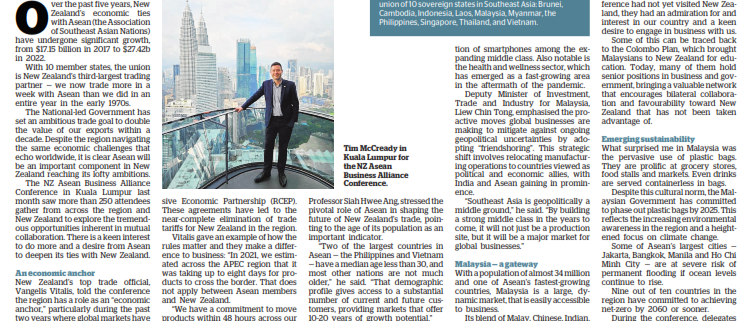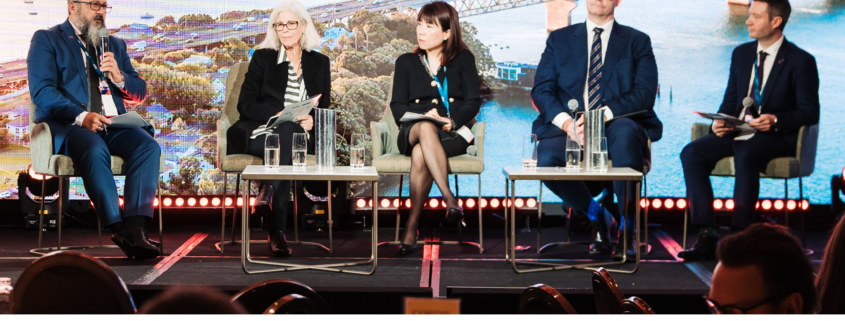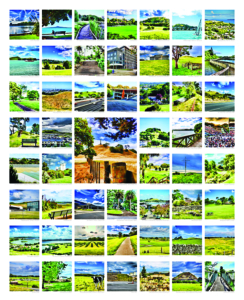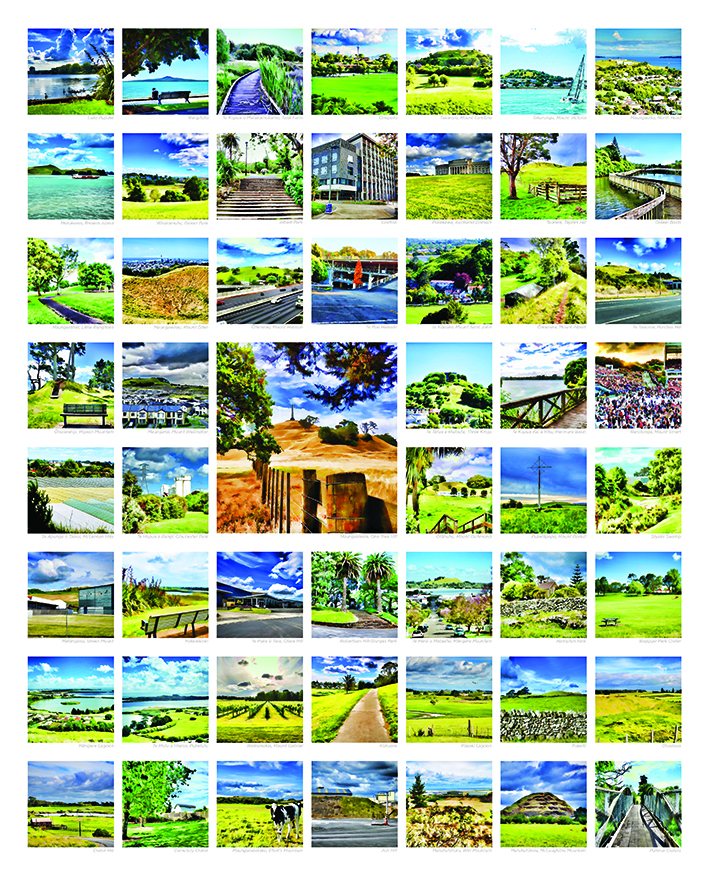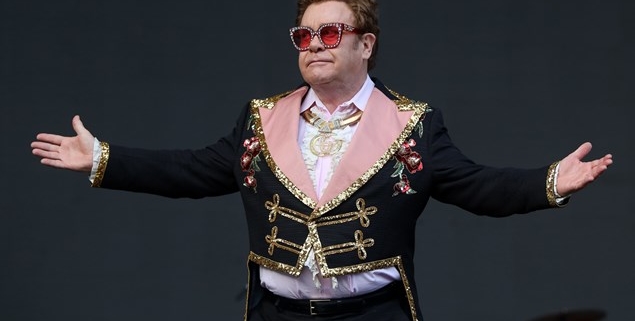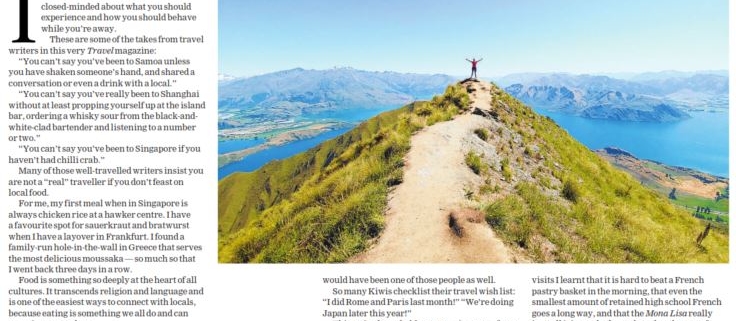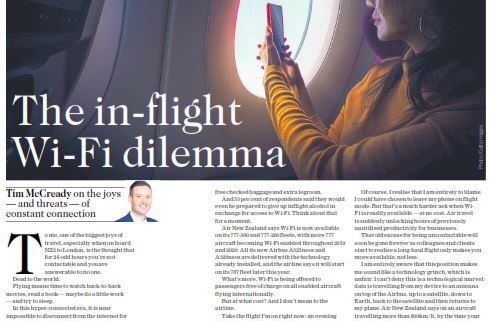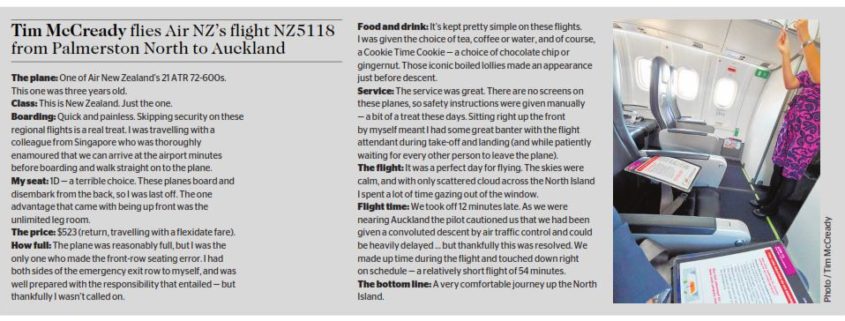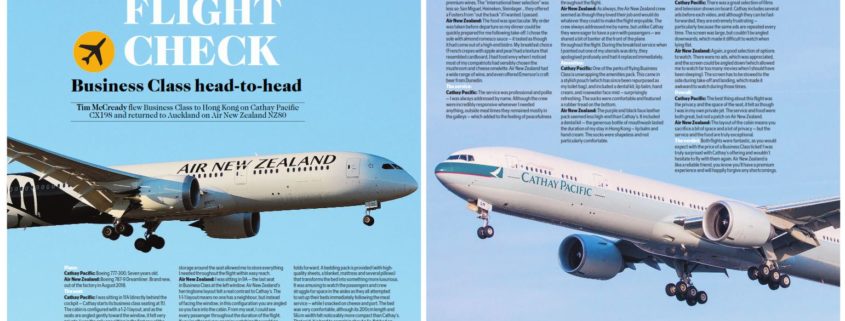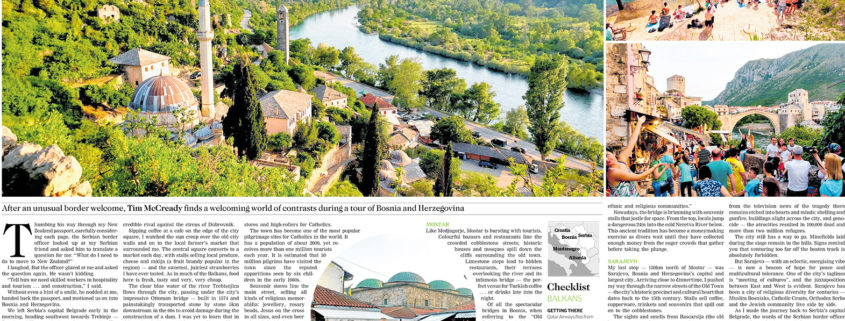Dynamic Business: ASEAN key to ambitious trade goals (NZ Herald)
Dynamic Business: ASEAN key to ambitious trade goals (NZ Herald)
Over the past five years, New Zealand’s economic ties with Asean (the Association of Southeast Asian Nations) have undergone significant growth, from $17.15 billion in 2017 to $27.42b in 2022.
With 10 member states, the union is New Zealand’s third-largest trading partner — we now trade more in a week with Asean than we did in an entire year in the early 1970s.
The National-led Government has set an ambitious trade goal to double the value of our exports within a decade. Despite the region navigating the same economic challenges that echo worldwide, it is clear Asean will be an important component in New Zealand reaching its lofty ambitions.
The NZ Asean Business Alliance Conference in Kuala Lumpur last month saw more than 250 attendees gather from across the region and New Zealand to explore the tremendous opportunities inherent in mutual collaboration. There is a keen interest to do more and a desire from Asean to deepen its ties with New Zealand.
An economic anchor
New Zealand’s top trade official, Vangelis Vitalis, told the conference the region has a role as an “economic anchor”, particularly during the past two years where global markets have seen the highest increase in non-tariff and other forms of direct protectionism.
Highlighting the strength of New Zealand’s trade ties with Asean, Vitalis underscored the significance of the rules-based trading system all member nations honour. There hasn’t been a case brought against a member within the Asean Australia New Zealand Free Trade Agreement (AANZFTA) or the Regional Comprehensive Economic Partnership (RCEP). These agreements have led to the near-complete elimination of trade tariffs for New Zealand in the region.
Vitalis gave an example of how the rules matter and they make a difference to business: “In 2021, we estimated across the Apec region that it was taking up to eight days for products to cross the border. That does not apply between Asean members and New Zealand.
“We have a commitment to move products within 48 hours across our customs borders, and the recent upgrade of the AANZFTA has delivered a commitment of six hours for chilled and high-quality fresh produce. That is a significant advantage that we enjoy in each other’s markets over and above our competitors.”
Next generation of trade
Professorial chair in business in Asia and Director of the Southeast Asia Centre of Asia-Pacific Excellence, Professor Siah Hwee Ang, stressed the pivotal role of Asean in shaping the future of New Zealand’s trade, pointing to the age of its population as an important indicator.
“Two of the largest countries in Asean — the Philippines and Vietnam — have a median age less than 30, and most other nations are not much older,” he said.
“That demographic profile gives access to a substantial number of current and future customers, providing markets that offer 10-20 years of growth potential.”
The digital economy is a particularly prominent area of opportunity for New Zealand, fuelled by Asean’s young population and the rapid adoption of smartphones among the expanding middle class. Also notable is the health and wellness sector, which has emerged as a fast-growing area in the aftermath of the pandemic.
Deputy Minister of Investment, Trade and Industry for Malaysia, Liew Chin Tong, emphasised the pro-active moves global businesses are making to mitigate against ongoing geopolitical uncertainties by adopting “friend-shoring”. This strategic shift involves relocating manufacturing operations to countries viewed as political and economic allies, with India and Asean gaining in prominence.
“Southeast Asia is geopolitically a middle ground,” he said.
“By building a strong middle class in the years to come, it will not just be a production site, but it will be a major market for global businesses.”
Malaysia — a gateway
With a population of almost 34 million and one of Asean’s fastest-growing countries, Malaysia is a large, dynamic market, that is easily accessible to business.
Its blend of Malay, Chinese, Indian, and European cultures is unique. Impressive shopping centres and towering skyscrapers, including the Petronas twin towers, dot the landscape, interspersed with colonial buildings.
The Commonwealth member has a political structure and legal framework largely based on British systems. Its cost-effectiveness, central location and the prevalence of English used in business makes it a great launchpad for expansion into the region.
While many attendees at the conference had not yet visited New Zealand, they had an admiration for and interest in our country and a keen desire to engage in business with us.
Some of this can be traced back to the Colombo Plan, which brought Malaysians to New Zealand for education. Today, many of them hold senior positions in business and government, bringing a valuable network that encourages bilateral collaboration and favourability towards New Zealand that has not been taken advantage of.
Emerging sustainability
What surprised me in Malaysia was the pervasive use of plastic bags. They are prolific at grocery stores, food stalls and markets. Even drinks are served container less in bags.
Despite this cultural norm, the Malaysian Government has committed to phase out plastic bags by 2025. This reflects the increasing environmental awareness in the region and a heightened focus on climate change.
Some of Asean’s largest cities — Jakarta, Bangkok, Manila and Ho Chi Minh City — are at severe risk of permanent flooding if ocean levels continue to rise.
Nine out of 10 countries in the region have committed to achieving net-zero by 2060 or sooner.
During the conference, delegates expressed interest in technologies and services New Zealand could provide in terms of renewable energy and carbon reduction technologies — yet another promising area to help New Zealand meet its ambitious new trade goals!
· The Association of Southeast Asian Nations (Asean) is a union of 10 sovereign states in Southeast Asia: Brunei, Cambodia, Indonesia, Laos, Malaysia, Myanmar, the Philippines, Singapore, Thailand, and Vietnam.
· Tim McCready was a guest of the Southeast Asia Centre of Asia-Pacific Excellence and the Malaysia NZ Chamber of Commerce.

